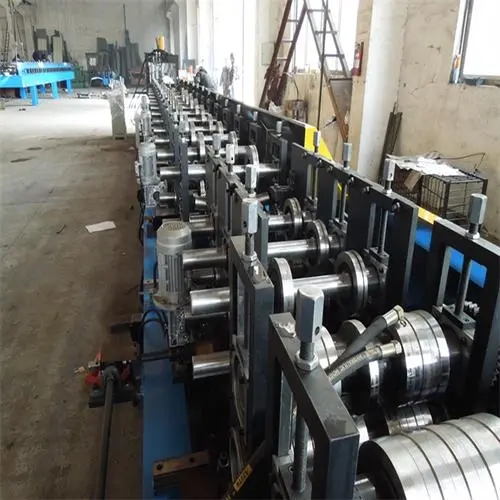
Ceiling Bar Roll Forming Machine An Essential Tool for Modern Construction
The construction industry has always been at the forefront of technological advancements, continuously evolving to meet the demands of modern architecture and design. One of the remarkable innovations that have gained tremendous popularity is the Ceiling Bar Roll Forming Machine. This advanced equipment has revolutionized the way ceiling bars are manufactured, providing speed, efficiency, and precision that are vital for today's construction projects.
A Ceiling Bar Roll Forming Machine operates by converting raw metal sheets into ceiling bars through a series of roll stations. This process involves feeding metal sheets into the machine, where they are progressively shaped and formed into specific profiles required for ceilings, such as T-bar or U-channel shapes. The ability to create various profiles means that contractors and builders can choose the best design suited for their specific needs, enhancing the versatility of the construction process.
Key Features and Benefits
1. High Efficiency One of the main advantages of a Ceiling Bar Roll Forming Machine is its high production capacity. This equipment can produce ceiling bars at a significantly quicker rate compared to traditional methods. The automated process minimizes manual handling, which not only speeds up production time but also reduces labor costs.
2. Precision Engineering Modern roll forming machines are designed with advanced technology that ensures precision in every piece produced. The exact dimensions and consistent quality are paramount in construction, where even minor discrepancies can lead to structural issues. The precision of these machines guarantees that the bars fit together perfectly, simplifying the installation process.
3. Material Versatility These machines can work with various materials, including steel, aluminum, and other metals, allowing manufacturers to choose the best material based on durability, weight, and cost considerations. This versatility supports sustainable building practices, as different materials can be used to meet specific regulatory requirements.

4. Customizability Ceiling Bar Roll Forming Machines can be customized to produce specific shapes and sizes tailored to client requirements. This flexibility is crucial in a market that increasingly demands bespoke solutions to meet unique architectural designs.
5. Reduced Waste The efficiency of the roll forming process also leads to less material waste compared to other metal processing techniques. By using the precise measurements and producing continuous lengths of ceiling bars, manufacturers can optimize their production process and contribute to more sustainable building practices.
Applications in Construction
The applications of ceiling bars are extensive in both residential and commercial construction. These bars are often used in suspended ceilings, which provide benefits such as easy access to overhead systems, better acoustic performance, and enhanced aesthetics. The lightweight yet sturdy nature of ceiling bars manufactured using roll forming machines makes them an ideal solution for modern buildings, accommodating both style and function.
Conclusion
In conclusion, the Ceiling Bar Roll Forming Machine represents a significant leap forward in construction technology. It combines speed, precision, and versatility, making it an invaluable asset for manufacturers and builders alike. As the construction industry continues to evolve, embracing innovative technologies like roll forming will help meet the growing demands for efficiency and high-quality materials. Investing in such advanced machinery opens new possibilities for enhancing productivity while adhering to sustainable practices in the ever-changing landscape of modern construction.